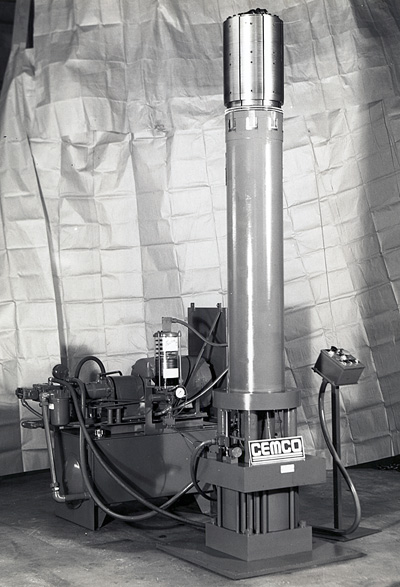 Limitations Limitations 
 1. The work piece must be of formable material. Probably 90% of all parts expanded are of hot or cold rolled low carbon steel, followed by the Cr., Ni., and Mo. Alloys. 1. The work piece must be of formable material. Probably 90% of all parts expanded are of hot or cold rolled low carbon steel, followed by the Cr., Ni., and Mo. Alloys.
2. The work piece must be of a length, diameter and wall thickness compatible with the geometry of the Driver-Jaw system. For example: A tube 2 inches in diameter by 10 feet long could not be expanded by conventional equipment; while a cylinder of 16 gauge sheet, 16 inch diameter by 20 inches long would be an ideal subject for both forming and sizing.
3. Since this is a forming process, the work piece is subject to spring back which will vary with type and condition of the part material, amount of previous cold working, amount of initial distortion, amount of expansion or shrinking, heat treatment and annealing or lack thereof. Some parts have so much residual and unequal stresses that they must be annealed before forming.
Versatility in tooling, controls and operation.
1. How It's Done
2. The Advantages
3. What Kind Of Part Can Be Made
4. Limitations
5. Tooling
6. Controls
7. Operation
8. Flexibility
9. Consultation/Analysis
10. Investigate
|
|
